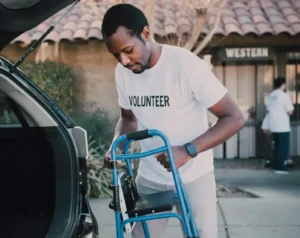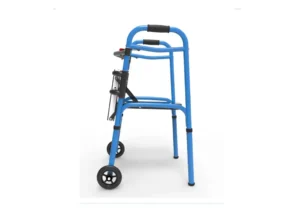Recovering from foot surgery can be daunting, but it doesn’t have to be. With the right approach, you can ensure a smoother path to healing. In this guide, we’ve compiled a list of essential dos and don’ts to help you navigate your recovery journey, making it as easy and effective as possible.
1. Embrace Your Doctor’s Instructions
Following your surgeon’s advice is crucial for a smooth recovery. They provide guidelines tailored to your specific surgery and health. It’s important to understand that the instructions you receive are based on your unique circumstances. Skipping any part could lead to complications that might prolong your recovery or even result in further medical issues.
Consider creating a checklist of the key instructions given by your doctor. This can help you stay organized and ensure you don’t miss anything important. You might also find it useful to have a family member or friend involved. They can help remind you of what to do and can offer emotional support.
2. Avoid Overexerting Yourself
Pushing yourself too hard can hinder your healing. Listen to your body and rest when needed to prevent complications. Recovery isn’t a race; it’s a journey that requires careful management and attention. Understand that patience is essential during this time, and give yourself permission to take breaks.
Engaging in light activities is fine, but don’t confuse that with overexertion. Simple movements around the house or short strolls, if advised, can be beneficial, but if you feel pain or discomfort, it’s crucial to stop immediately. Your body is communicating with you, so honor that dialogue.
3. Keep the Surgical Area Clean and Dry
Maintaining hygiene can reduce the risk of infection. Follow care instructions for dressings and bathing after surgery. In the early days of recovery, your surgical site is particularly vulnerable, so keep it clean and adequately covered.
You might want to set reminders for dressing changes or closely examine your bandages for any signs of redness or unusual swelling. Don’t hesitate to reach out to your healthcare provider if you notice anything concerning. Remember, a proactive approach can prevent small issues from evolving into larger problems.
4. Don’t Skip Physical Therapy
Engaging in physical therapy as prescribed can help regain strength and flexibility, which is crucial for normal foot function. This part of your recovery is often overlooked but can make a notable difference. Your physical therapist will teach you exercises that promote healing while preventing stiffness.
Even if you’re feeling better, sticking with your therapy sessions is important. These exercises are designed to assist your recovery process, making your feet stronger and more resilient. Missing sessions can lead to setbacks, so prioritize this stage of your recovery.
5. Stay Hydrated and Nourished
Proper nutrition and hydration play a vital role in the healing process. Focus on a balanced diet rich in vitamins and minerals. Certain nutrients, such as protein, vitamin C, and zinc, can expedite your recovery by promoting tissue healing and repair.
Don’t wait until you’re thirsty to drink water; stay consistently hydrated. Keeping a water bottle nearby can serve as a helpful reminder. If meal prep is a challenge, consider enlisting help or finding easy, healthy recipes that don’t take much time to prepare. Your body will thank you for nourishing it properly during this healing phase.
6. Avoid Smoking and Alcohol
Both smoking and alcohol can impede healing and increase the risk of complications. It’s best to avoid them during recovery. The chemicals in cigarettes hinder circulation, which is essential for transporting nutrients to your healing tissues.
Similarly, alcohol can affect your ability to manage pain and may interfere with medications prescribed by your doctor. If you’ve struggled with these habits in the past, consider this recovery period as an opportunity for healing in more ways than one. Seek additional support if necessary, and focus on healthier alternatives.
7. Listen to Your Feet
Pay close attention to how your feet feel. Any unusual pain or swelling should be reported to your healthcare provider immediately. Your feet have been through a significant trauma, and they will require careful monitoring as they heal.
Often, people overlook minor signals their body sends, thinking they are simply a part of the healing process. However, addressing concerns early can make a big difference in your recovery trajectory. If something doesn’t feel right, trust your instincts and seek guidance.
8. Do Use Crutches When Advised
Using crutches or a walker can help alleviate pressure on your healing foot, allowing it to recover more effectively. This adjustment may feel awkward at first, but with time, you’ll find the rhythm that works for you.
Crutches are not just assistive devices; they play a critical role in your recovery. Follow your doctor’s guidance about using them properly to ensure you’re benefiting from this tool fully. Consider practicing in a safe space until you’re comfortable, as safety should remain a priority during your recovery.
9. Don’t Ignore Pain Management
Manage your pain with prescribed medications or natural remedies. Comfort is key in helping your body heal. Don’t hesitate to communicate any pain or discomfort to your healthcare provider—they can adjust your pain management regime as needed.
Understanding your pain levels can empower you during recovery. Keep a pain journal if it helps you articulate your experiences better. Regularly assessing your pain allows you to gauge your progress and helps inform your doctor’s understanding of your needs.
10. Stay Positive and Patient
Mental health is just as important as physical health during recovery. Stay positive and be patient with your progress. It’s completely normal to have days when you feel frustrated, but acknowledging these feelings can help you process them in a healthy way.
Consider setting small, achievable goals to create a sense of accomplishment. Celebrate these milestones and remember that recovery is a gradual process. Surround yourself with encouraging friends and family who uplift your spirits and remind you of your strength.
11. Do Follow Up with Your Doctor
Regular follow-ups can help track your healing progression and address any concerns or complications early. These appointments are vital for adapting your recovery plan based on your progress. Don’t skip them; think of them as essential checkpoints in your journey back to full functionality.
Preparing questions ahead of time can help you make the most out of these visits. Being proactive in your healthcare demonstrates your commitment to recovery, and your healthcare provider will appreciate your engagement. Engaging in these discussions fosters a collaborative relationship that benefits your healing process.
12. Avoid High-Impact Activities
Steer clear of running or jumping until your doctor gives the green light. These activities can jeopardize your recovery. While it’s essential to keep moving, high-impact exercises could lead to pain or setbacks that derail your hard work.
Focus on gentle movements and low-impact exercises approved by your healthcare provider. Walking or stretching can keep your body engaged without compromising your healing. Remember, your fitness journey has many phases, and it’s okay to modify your activities.
13. Do Get Support from Friends and Family
Having a support system can ease the recovery journey. Don’t hesitate to ask for help when you need it. This might involve relying on family for cooking meals, friends for companionship, or seeking professional support when necessary.
Don’t underestimate the emotional support that comes from loved ones. Sharing your experiences and frustrations can provide relief and create an environment where you feel understood. Encourage them to participate in your healing journey—they can be a vital part of your recovery.
14. Don’t Compare Your Recovery to Others
Everyone heals at their own pace. Focus on your individual recovery journey rather than comparing it with others. This is crucial; external comparisons can breed unnecessary frustration or unrealistic expectations.
Your healing process is unique, and accepting that will empower you. Surround yourself with positive affirmations and remember that each step forward, no matter how small, is a step toward regaining your strength and mobility.
15. Celebrate Small Wins
Acknowledge progress, no matter how small. Celebrating these milestones can keep you motivated and optimistic. Whether it’s walking a few more steps or seeing gradual improvement in mobility, take a moment to appreciate your achievements.
Consider rewarding yourself for reaching these small goals, which reinforces positive behavior and reminds you that recovery is a journey worth celebrating. By keeping a gratitude journal during your recovery, you can reflect on these wins and improve your mindset. Remember, every bit of progress is worth celebrating!




